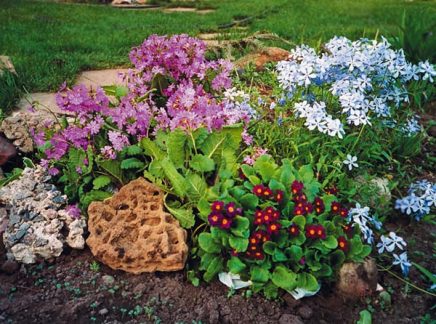A spring flower, also known as a primrose, is able to bloom even before the final snow melts. Due to this feature, the plant attracts the close attention of many landscape designers and gardeners. The primrose is long-term, planting and care of which does not take much time and effort, captivates with the spring attractiveness of bright inflorescences against the background of nature that has not yet awakened.
Material Content:
Garden primrose perennial: features of cultivation
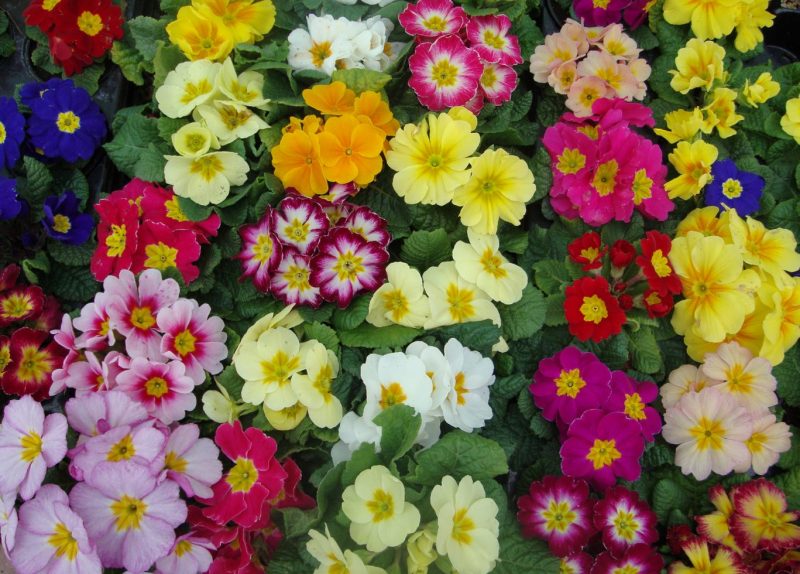
Each gardener or gardener has a plot unsuitable for further cultivation of crops in it, in their opinion. However, unpretentious primrose can fully develop in such territories, delighting the owner with spring colors. And although the beauty of the primrose is not able to overshadow the surrounding flowers, but it is able to give its flowers for a long period - from mid spring to mid summer, and sometimes twice during the growing season.
Planting flowers
Proper planting is the key to successful plant growth.
Site and soil preparation
Different types of primrose have their own preferences: some like sunny areas, others like areas shaded by other plants, and others like the damp shores of water bodies. The best solution would be to plant the crop on a shaded area or on the east side of the house, which will protect it from drying by the midday scorching sun. If planting flowers is planned for the design of the rock garden, then you should avoid the south side.

The primrose prefers light fertile soils with high humidity and a good drainage system that prevents stagnation of water, in which the flower most needs a phase of intensive development and flowering. In the case of severe soil depletion, additional enrichment with nutrients is carried out by adding organics with a rate of 20 kg of a mixture of compost, humus and peat in a ratio of 2: 1: 1 per 1 m2 and mineral fertilizers - 20 g nitroammophoski for a similar area.
How and when to plant?
The planting of perennial primrose in the garden is carried out in spring or autumn in the second year of development. Compact varieties are planted with a distance of 15 cm between specimens, and large species are located 20 cm apart.
Important! Bushes should be planted in such a way that at the end of planting growth they close up: primrose negatively refers to excess space.
Landing rules
Planting primrose is usually carried out seedlings, for which you must follow the instructions:
- In early February, seeds purchased in a specialized store are distributed on the surface of a moistened soil mixture, consisting of leaf soil, sand and peat in a ratio of 2: 1: 1, so that up to 5 pieces per 1 cm2.
- The dishes with crops are covered with polyethylene and placed in a freezer with a temperature up to -10 ° C.
- After 3-4 weeks, the container with frozen seeds is mixed on the windowsill, where it is obscured by direct sunlight.
- A week after the appearance of the first shoots, the film is removed.
- When two pairs of true leaves form in seedlings that are characterized by slow growth, seedlings dive into boxes with tweezers
Important! Primrose from seeds is planted in the garden only after two years of growing in boxes.
Care for primrose garden perennial
Primrose does not need special care. However, for a flower to please its owner with flowers for an extended period, it is required to adhere to the basic agrotechnical requirements for the cultivation of primroses in open ground.
Watering
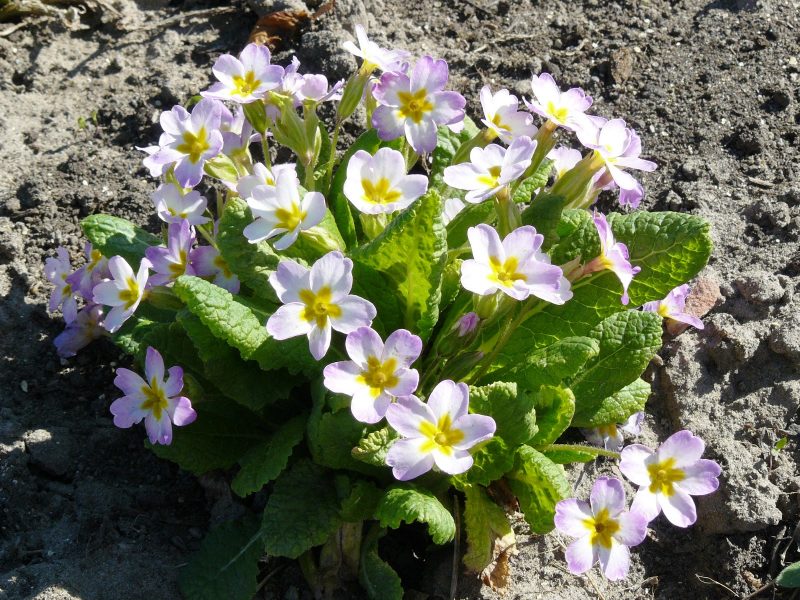
Culture needs constantly moistened soil. In spring, abundant watering is carried out once a week. In hot periods, the frequency of irrigation and the volume of water used doubles - 1 m2 is irrigated with three liters of liquid.
Top dressing

Enrichment of the soil with nutrients is an integral component of good care. During the growing season, the primrose is fed weekly with a solution of complex mineral fertilizers with a concentration of two times less than indicated on the package.
Advice! To avoid growing green mass instead of forming flowers, fertilizing with nitrogen-containing fertilizers should alternate with the addition of potassium and phosphorus.
Flower transplant
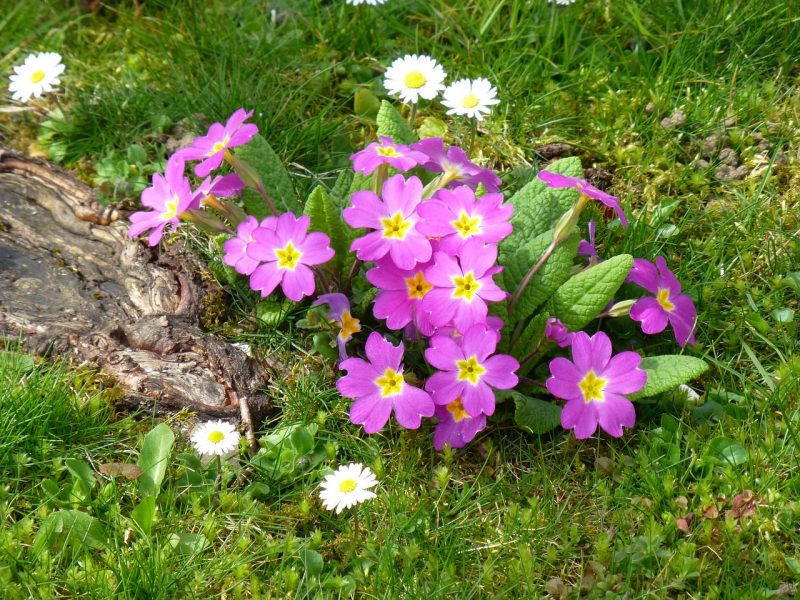
Primrose refers to highly growing plants, therefore, it needs a systematic transplant every 4-5 years, during which division of the bush is carried out.
Pest and disease protection
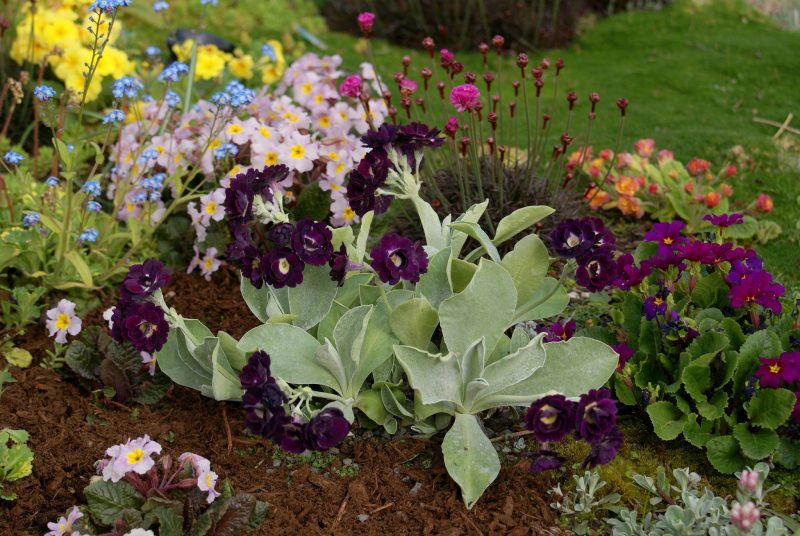
Since the primrose is cultivated on moist soils in partial shade, it is prone to damage by fungal diseases in the form of powdery mildew, rot, rust, as well as bacterial spots. When manifestations of fungal diseases are detected, fungicide treatments are carried out, and in the case of bacterial diseases, the affected specimens are destroyed. Of the pests on the primrose, aphids, spider mites, weevils, fleas are noted, which can be controlled by spraying the plantings with an insecticidal preparation.
Winter preparations

After flowering is complete, the soil under the primrose is loosened and cleared of weed vegetation, after which the flowers are left alone. In the autumn period, the culture begins to grow green mass, which serves as a natural shelter for flowers in the winter.
Breeding
The seed method is not the only possible way to breed primrose. The flower can be propagated by vegetative methods - cuttings, dividing the bush and rooting the shoots.
Bush division
After reaching the bush for three years, as a rule, you can begin to divide it. However, there are exceptions: some varieties are propagated using this method only after five years of age. The best time for dividing the bush is early spring or autumn - periods before or after the flowering phase.
During the procedure should be guided by the following algorithm:
- The plant is carefully scooped up, and its root system is cleared of the remains of soil.
- The rhizome is divided with a sharp knife into parts, each of which should have 2-3 roots and a leafy outlet.
- Places of sections are sprinkled with wood ash as an antiseptic.
- After the separated parts of the rhizome are planted in the garden.
- In spring division, each new plant is watered daily for 12-14 days.
- If the procedure is carried out in the fall, young specimens take refuge before the onset of serious cooling.
Propagation by cuttings
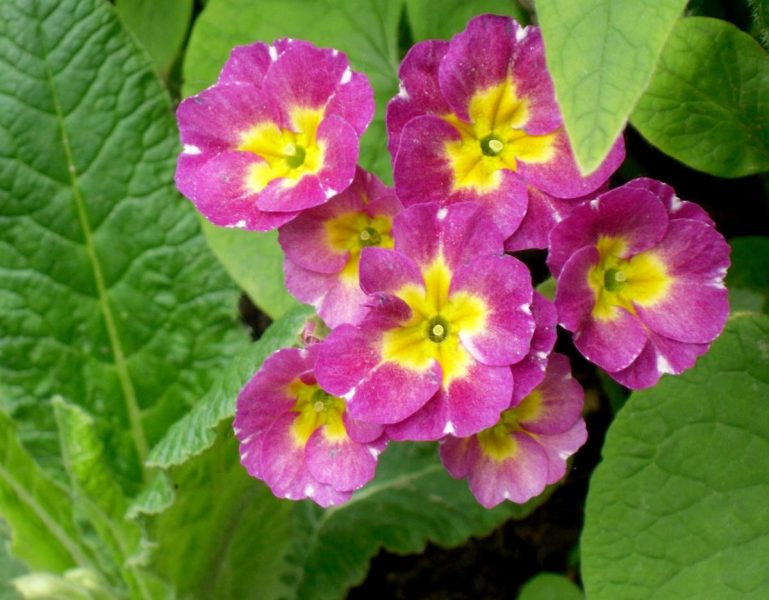
When using this method, the largest primrose bush is selected, from which, after extraction from the soil, parts with developed roots are separated.
Then:
- The tops of the cuttings are longitudinally incised, which allows to accelerate the growth rate of the kidneys.
- Prepared cuttings are planted in open ground to a depth of 4 cm.
Rooting
In the case when the plant lacks a formed root system and well-developed rosettes, the rooting method is the most suitable way of propagation.
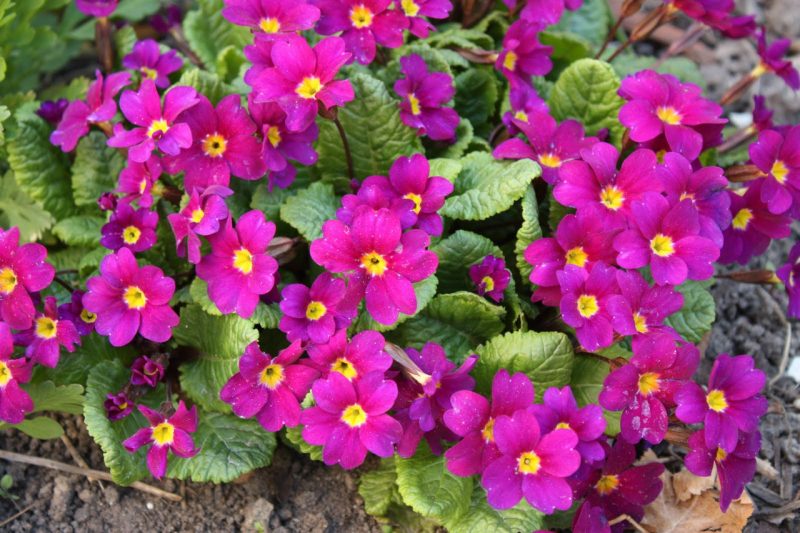
For a successful implementation, you must perform the following steps:
- From the base of the rhizome, the leaf petiole is separated with ⅓ of the leaf plate.
- The shoot is planted in a container filled with a substrate of sheet soil and sand in equal parts.
- The pot is transferred to a room with a large amount of ambient light and a temperament range of 16-18 ° C.
When an escape is formed from the kidney, the plant moves to the garden, provided that weather conditions allow it.
Landscape design
The variety of species and varieties of primrose, as well as the ease of cultivation contribute to its popularity among landscape designers, some of which prefer primroses, rather than tulips or daffodils. Indeed, if you select the varietal composition correctly, the flower garden can delight the owner with flowers from mid-spring to late summer.
Most often, primrose is used to decorate the following objects:
- The banks of artificial reservoirs are often decorated with hygrophilous primroses.
- Borders and paths are organically shaded by bright grades.
- Rock gardens and rockeries are also often decorated with primroses due to their undemanding to the ground and lighting.
So, garden primrose, being an undemanding flower, is an ideal culture for any garden site. And species diversity makes it possible to enjoy long flowering almost until the end of summer.


